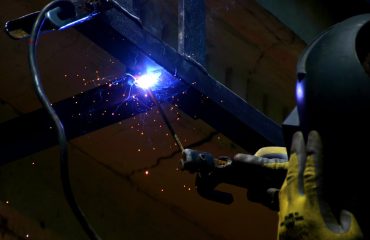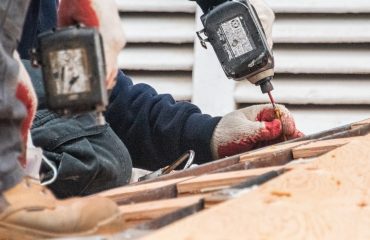Cold drawn round steel bars are a cornerstone of countless industries, providing exceptional strength, precision, and durability. This comprehensive guide will delve into the intricacies of these versatile materials, exploring their manufacturing process, mechanical properties, diverse applications, and key specifications.
The Cold Drawing Process: Shaping Strength and Precision
Unlike hot-rolled steel bars, which are shaped at high temperatures, cold drawn steel bars undergo a process of deformation at room temperature. This involves pulling a pre-rolled bar through a series of dies with progressively smaller diameters. This controlled deformation significantly alters the material’s microstructure, leading to enhanced mechanical properties. The process involves several key steps:
- Pickling: The initial bar is cleaned to remove scale and impurities.
- Drawing: The bar is pulled through a series of dies, reducing its diameter and improving surface finish.
- Straightening: The drawn bar is straightened to ensure dimensional accuracy.
- Cutting to Length: The bars are cut to the specified lengths.
The cold drawing process induces significant strain hardening, resulting in increased tensile strength, yield strength, and hardness. This also improves the surface finish, making cold drawn bars ideal for applications requiring precise dimensions and a smooth surface.
Exceptional Mechanical Properties: The Foundation of Performance
Cold drawn round steel bars boast superior mechanical properties compared to their hot-rolled counterparts. These properties are crucial for determining the bar’s suitability for specific applications. Key mechanical properties include:
- Tensile Strength: This measures the maximum stress the bar can withstand before fracturing. Cold drawing significantly increases tensile strength.
- Yield Strength: This indicates the stress at which the bar begins to deform permanently. Higher yield strength ensures greater resistance to deformation under load.
- Hardness: Cold drawing increases hardness, improving wear resistance and durability.
- Ductility: While cold drawing increases strength, it generally reduces ductility (the ability to deform before fracturing). However, this reduction is often acceptable given the other benefits.
Precise control over the drawing process allows manufacturers to tailor the mechanical properties to meet specific application requirements.
Diverse Applications: Where Strength Meets Precision
The combination of high strength, precision dimensions, and excellent surface finish makes cold drawn round steel bars indispensable in a wide range of industries. Some key applications include:
- Automotive: Used in axles, shafts, and other critical components requiring high strength and durability.
- Construction: Employed in reinforcing bars, structural components, and machinery parts.
- Machinery Manufacturing: Forms the basis for shafts, spindles, pins, and other precision-engineered components.
- Aerospace: Utilized in high-strength, lightweight components where reliability is paramount.
- Hydraulic and Pneumatic Systems: Used in cylinders, pistons, and other components requiring resistance to high pressures.
The versatility of cold drawn round steel bars extends to numerous other sectors, highlighting their importance in modern manufacturing.
Understanding Steel Bar Specifications: Decoding the Numbers
Selecting the appropriate cold drawn round steel bar requires careful consideration of its specifications. These specifications typically include:
- Diameter: Available in a wide range of diameters, from millimeters to inches.
- Length: Can be supplied in standard lengths or cut to custom specifications.
- Grade: Different steel grades offer varying mechanical properties, such as tensile strength and yield strength. Common grades include 1018, 1045, and 4140.
- Surface Finish: The surface finish can range from bright (highly polished) to black (less polished).
- Tolerance: Specifies the allowable deviation from the nominal diameter.
Understanding these specifications is critical for ensuring the selected bar meets the requirements of the intended application.
Advantages of Cold Drawn Round Steel Bars: Why Choose Cold Drawn?
The advantages of using cold drawn round steel bars are numerous and contribute to their widespread adoption across various industries:
- High Strength and Hardness: Superior to hot-rolled bars, offering greater resistance to wear and deformation.
- Excellent Surface Finish: Reduces friction and improves the aesthetic appeal of finished products.
- Precise Dimensions: Minimizes machining requirements and enhances component accuracy.
- Improved Machinability: The enhanced surface finish and microstructure can lead to improved machinability in certain cases.
- Cost-Effectiveness: While the initial cost might be slightly higher than hot-rolled bars, the superior properties often lead to cost savings in downstream processing and reduced material waste.
These advantages make cold drawn round steel bars a cost-effective and high-performance solution for a wide array of engineering applications.
In conclusion, cold drawn round steel bars represent a crucial material in modern engineering and manufacturing. Their superior mechanical properties, precise dimensions, and excellent surface finish make them ideal for demanding applications across numerous industries. Understanding the nuances of their manufacturing process and specifications is key to harnessing their full potential.
SEO Tags:
cold drawn steel bars, round steel bars, steel bar specifications, steel bar applications, cold drawing process




